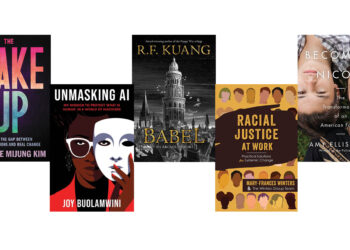
[Editor’s note: An earlier version of this post first appeared on the O’Reilly Media blog.]
To grow, publishers must either battle other publishers over market share or identify and serve new markets. Digital media are useful to publishers only insofar as they serve one of these aims. (A separate matter is using digital media to drive down costs and boost profits, but that is not growth in the defined sense.) Using digital media to redistribute market share may be costly and not lead to the expected gains, as a publisher’s rivals are likely to use the very same tactics: anyone can publish for the iPhone and Android, anyone can get books onto the Kindle, anyone can set up a comprehensive XML workflow. But with market share battles there is no relief; it is an arms race, and a publisher can no more forego publishing in digital form than it can stop seeking new and creative authors. For a publisher pursuing growth, alas, it’s new markets or nothing.
Digital media do not necessarily lead to new markets, and in some situations, digital media may actually serve to shrink markets (think of the music industry or what demand-driven acquisitions is doing to the monograph business). For publishing in the developed world, finding a new market can be challenging. Our lives are full, our calendars are snug, and our attention is spread over a seemingly infinite number of media choices, ranging from old-fashioned books to scores of new journals to social networks, conferences, music, movies, museums, and countless other things. To find a new market requires opening up a crack in a broad, seamless facade.
Which brings us to interstitial publishing, publishing between the cracks. (No, uh, wisecracks, please.) For a day filled with text messages and meetings and slathered over with email, one opportunity for publishers is to promote interstitial reading, reading that is done in the brief moments between other engagements, whether those claims on our attention are other media or simply the wiggle room in a schedule: the time spent waiting for a plane, a doctor, or for a meeting to begin. That’s a huge number of minutes in any day; a good portion of our lives is wasted while we are waiting for the main course to arrive.
This point was brought to mind by the frequent complaint of being stuck for an hour or more in an airport. What a great opportunity to pull out an iPhone and check mail, alerts, and Web sites! But a user in this situation could have been reading formally published material (formal here means “the kind of stuff you are willing to pay for”) to slip between the interstices of the day. Trade publishers have begun to study this, and the Wall Street Journal dedicated a feature story to the emerging practice.
An hour is a big crack in the day; to become a true interstitial publisher, you would have to aim smaller. How about the 10-minute crack? Five minutes? Think of your own day: How often are you simply waiting, doing nothing? Daydreams don’t count — because ultimately the aim of every media business is to colonize your mind’s every moment. (Dust off that old copy of the science fiction classic “The Space Merchants” by Frederik Pohl and Cyril M. Kornbluth for a satiric vision of imperial marketing.) If you had something to read that you could sip in draughts of five minutes at a time or perhaps 10, you would participate in the growth of the new market for interstitial publishing. And this is genuine growth, as at this moment the total sales in the interstices is zero or close to it. The goal is to go from zero to 60 in five minutes.
For interstitial publishing to work, a user needs a smartphone, which is carried everywhere, to take advantage of the cracks in the day; for some people a tablet may suffice. For this kind of activity, a Kindle or any dedicated ebook reader won’t work, as it is too much of an effort to pull such a device out of your bag or backpack as you wait in line in the supermarket. So if it’s growth you want (as distinct from market share), forget the Kindle. It is astonishing to consider how many times during the day we check our smartphones for mail, Facebook, and messages. Instead of email and various alerts, however, the phone could display the twenty-third chapter of the new micronovel by William Adama or an updating service for new research published in a particular field. The proper device is critical, and the software that runs on it must have sophisticated bookmarking capabilities.
You also need (and this ultimately may be the harder part) content crafted with the interstices in mind. Reformatting “Moby-Dick” for interstitial publishing simply won’t do, as the structure of the text, even the syntax of the sentences, militates against draughts of only 5 minutes. This is not a matter of immersive vs. non-immersive reading: it’s entirely possible to get immersed in 5 minutes. But it is an issue of what you get immersed in. I am skeptical about the utility of STM articles on phones as well, as their technical nature makes significant demands on display technology. Sorry, Tolstoy and Grisham, even William Gibson, but we need a new breed of writer, who is born digital, who is born in the interstices.
Often interstitial publishing is confused with having a short attention span, as though a moment is somehow less valuable than an hour. The key to this new form of publishing, however, is that it views the short period of each entry not as a watered-down version of the “real thing,” a long text, but as something built perfectly for the space and time it occupies. This is what McLuhan meant by “understanding media”: it’s not about the content in itself but the content as it accommodates itself to the shape of the surface, which in turn is created and supported by the underlying technology.
Interstitial publishing can be fiction or nonfiction, research or entertainment, but it is unlikely to be a single isolated five-minute item, as it would be hard to market or to find such an item. More likely short items will be strung together in an anthology; the thesis of the anthology (“brief bursts about the new administration”; “101 short poems about transistors and current”) will suffuse each item with a sense of being part of a whole.
Narratives for interstitial media may very will be linear within each five-minute episode, but it is improbable that item A will lead serially to item B, to item C, and so forth. It would simply be hard to gather the narrative in our minds if it were written in this way. More likely each episode will have a beginning and an end–and then cut to another episode, which may be built around a different time or place or another character. All the pieces get assembled in our minds, five minutes at a time. The novel Hopscotch by Julio Cortazar is an early precursor of this form.
For “five-minute fiction” to catch on, we will need creative people who probe the nature of the interstitial medium. It’s easy to forget (or never to have known) that the linear narrative as we think of it today was in fact invented once upon a time when writers were faced with books that were inexpensively manufactured and distributed to wide audiences for the first time. Publishers will need to seek out writers who comprehend the new medium, who can engage a reader for five minutes, who can make the many pieces of the work congeal in the reader’s mind. These writers will study readers, smart phones in hand, standing before the spinning dryer in the laundromat, stopped at a red light, preparing to board a plane, waiting for the meeting to begin. In all of this publishers will see growth.
The aim of digital media should not be (or should not only be) to substitute a screen for a printed page but to reinvent the text on the screen and, in so doing, to bring new readers into the marketplace. New readers bring new markets, and only new markets bring growth.
Discussion
14 Thoughts on "Interstitial Publishing"
Perhaps the rise of interstitial reading will prompt the return of the serialized novel, popular in Dickens’s day?
Also suitable for such sporadic reading are magazines. I subscribe to both print and digital forms of Swimming World, where the articles tend to take about five minutes to read. I carry the latest issue of the print version with me everywhere and take it out of my back pocket when, for example I’m waiting in the doctor’s office where the choice of magazines provided seldom suits my taste.
See this recent announcement:
http://io9.com/serial-box-aims-to-reinvent-storytelling-for-the-web-1724308296
STEM has one good interstitial product — abstracts. Kudos lay summaries and impact statements may be others.
Thanks, David – naturally that’s what I was thinking. ResearchSwipe for skimming that day’s publications in your field (or matching your keywords) and bookmarking those you want to look back at later on. It needn’t all be text based either, right? – an app of the day’s infographics for your field. Even with all the other lures on our time (ref Talltimber’s comment below), this could still be a strong contender for those interstitial moments!
As a print analogue, the chapbook form can be interstitial in this same sense, small format for small pieces of time.
We live in a culture of distraction, in which a dozen lures exist on my phone already, all trying to get my attention. Examples: reading this blog (interstial length when you add thinktime) to “news” to Sailing Anarchy to YouTube to calling a parent, etc. Why do you believe there is a lot of wasted time to fill? Need to beat Twitter, Faecbook, NYT, Instagram, games, and all incumbent interstial incumbents. Sure, a compelling mini series could work as long a it wasn’t clogged with monetization or more fun to binge later.
Perhaps, such small bursts of free time should be spent just relaxing, looking around for nothing in particular, and giving the brain a rest. Some very good ideas come forth that way.
Sounds ideal 🙂
Question is how it compares to the reflex-‘hit’ of checking the phone..?
In 5 minutes of spare time, I’m personally prone to opening 3+ stories via Twitter that look interesting / come from interesting places (like SK) for dipping into, and probably reading in full later (when I have more than 5 minutes to go over them…).
A “book” or collection of poems is the most credible genre to fill those voids that you strive to describe.
Poetry is concentrated meaning. When properly put together, it packs a punch of profundity that even the most prodigious professor would appreciate.
And Joseph, please update the parenthesized exclamation above. Your introductory sentence about interstitial possibilities contains this textual element: (No, uh, wisecracks, please.)
That is so old hat! Politically correct scholars these days are obliged to exclaim: “No, um, wisecracks, please.”
Many fiction novelists are already ahead of you with this, Joseph. Not least the world’s biggest-selling author, James Patterson, whose global bestsellers typically occupy two print pages (about 800 words) per chapter. Ideal to make the print reader feel like they are flowing through the book, and ideal for just the interstices you reference here.
Many other authors – not least myself – have used this device to great effect. I write everything in this compartmentalised way with smartphones in mind. And no, I predate PCs, let alone smartphones, so this need not be the exclusive preserve of the just-out-of-diapers author.



